A and A Models
VJ101 in 1/72 scale: kit modelling report of the A and A Models kit
The West German Ministery of Defense asked in 1956 aircraft companies to come with proposals for a successor of the Lockheed F-104 Starfighter used by the West German Lufwaffe in the 1960s. Basic requirements were a high speed MACH 2.5 fighter and in 1957 also VTOL (vertical take off and landing) requirements were added for a "Senkrechtstarter".
Four companies responded: Bolkow with the P110, Heinkel with the He.231, Messerschmitt with the X1-21, Focke Wulf with Fw.860. A consortium was formed between Messerschmitt, Heinkel and Bolkow to establish the Entwicklungsring-Sud, or EWR-Sud that was given a contract end 1959. The aircraft design had 2 engines mounted in tandem aft of the cockpit and 2x2 engines mounted in swiveling wing tip nacelles for VTOL and level flight capability. The engine type was the Rolls Royce RB.145.
It started with several experiments in a test hover rig in 1960 to evaluate stability and control. Next followed aircraft to test various concepts: the X1 would focus on the VTOL tests and the X2 the high speed flight. Hover test were also made with these before "free flights" were made as seen here.....
The X1 test aircraft made from end 1962 particularly some 124 hover flights and with supersonic at MACH 1.08 without afterburner (!) but it was destroyed on Sept 14, 1964 with an uncommanded roll at conventional take-off. The second aircraft X-2 started tests from mid 1964 and eventually in total made some 325 flights including some 45 flights hover flights and some 9 vertical-horizontal transitions. It had a hard landing in 1967 but was repaired. It reached during a test flight MACH 1.14.
The envisaged high supersonic aircraft would be the VJ-101D and was a complete redesign after a NATO request. It would feature 5 RB.162 lift engines including 2 conventional RB.153 jets with thrust deflectors in the tail, but it was never produced. The VJ101 project was stopped in 1968.

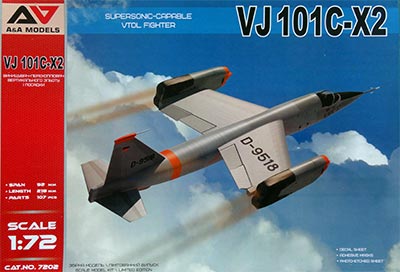
The 1/72 scale model kit of the VJ101C-X2 is of a new plastic model company: A and A Models.
The mid grey parts are very well moulded, the instructions are full colour on gloss paper and it looks all excellent. Of the VJ101 different kits were released: of the X2 and X1. I bought the kit #7202 for the VJ101C-X2 in April 2018 for about EUR 27,=. It represents the aircraft that had wing tip engine nacelles with afterburners to expand the flight envelope beyond the speed of MACH 1.
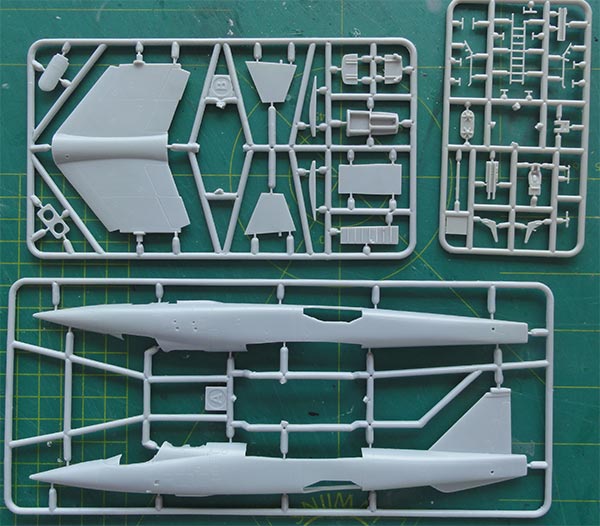
There are about 100 parts, a nice decal sheet, paint mask for the canopy and a small etched metal fret with parts for the cockpit interior. There are 2 clear canopies: closed and open.
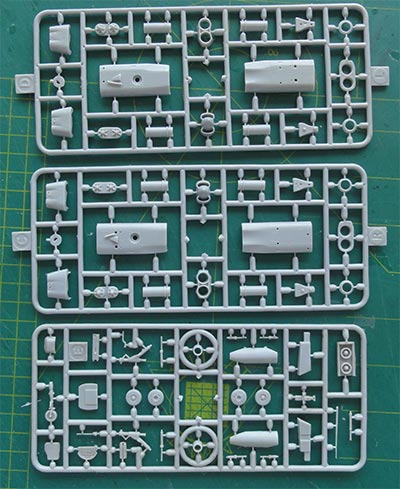
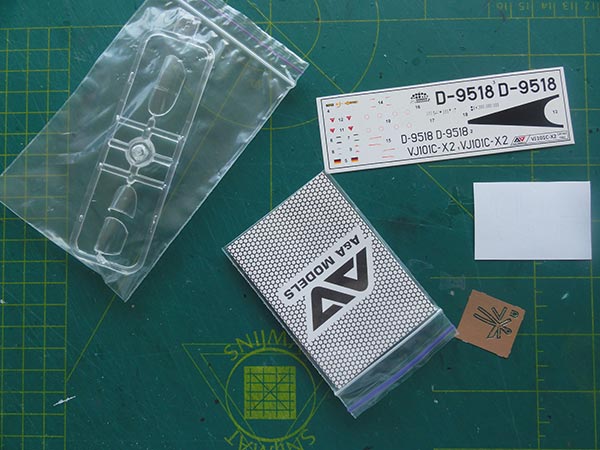
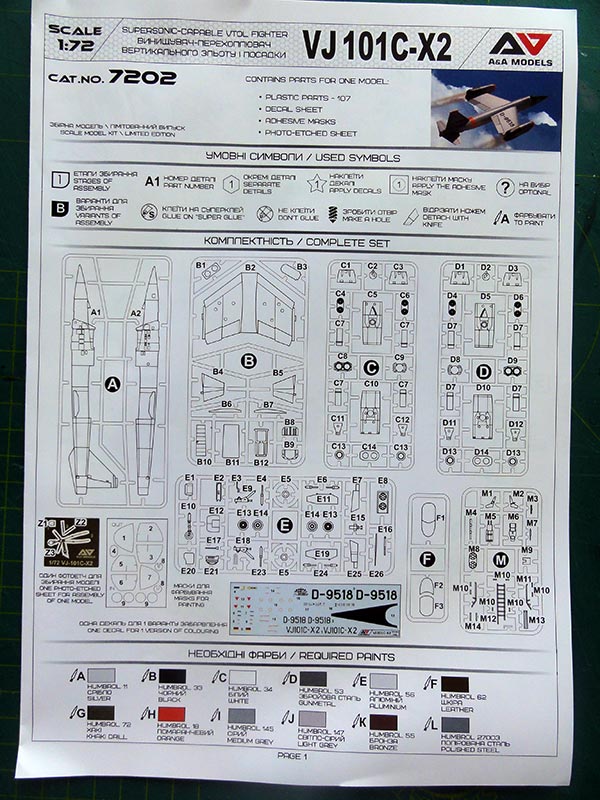
Decals are for the only X2 "D-9518" during tests in a bare metal scheme.
The parts are well moulded and fine with recessed panellines. There is good detail in the small cockpit with the MB GA7 seat. The assembly of the engine jet pipes inside the nacelles takes some work but it is all internal. Looking at the internal assembly STEPs 7-10, it was decided to set the nacelles fixed, so no swivelling parts are needed.
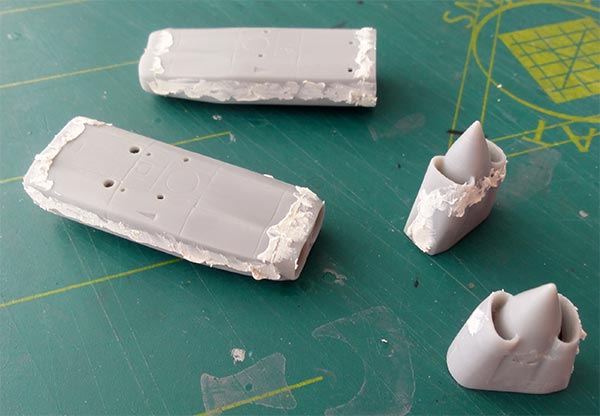
Quite some putty and sanding at the nacelles.
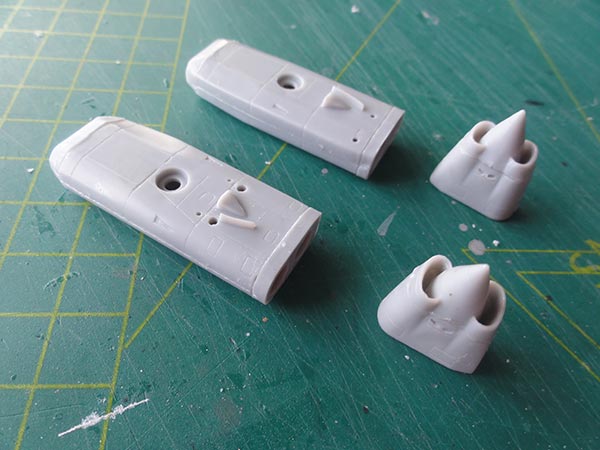
The nacelle front sections can be set to have a gap with the rear. I added small spacers from plastic rod.
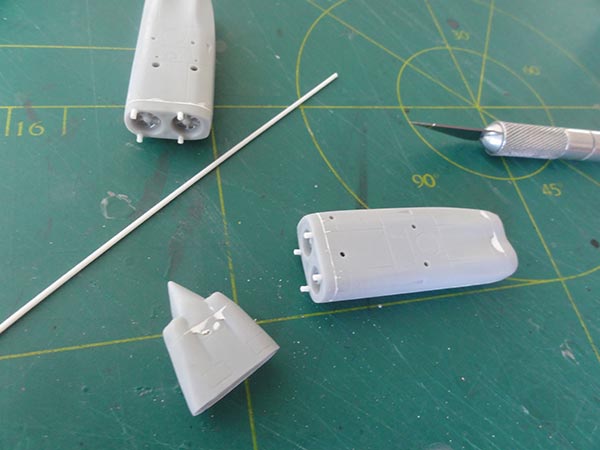
Fuselage was next, install some weight in the nose to avoid "tail sitting".

To fit the central wing section, I removed 1 mm plastic at the junction joints. Aligning and getting parts all symmetrical needs care and a bit putty and sanding is needed.
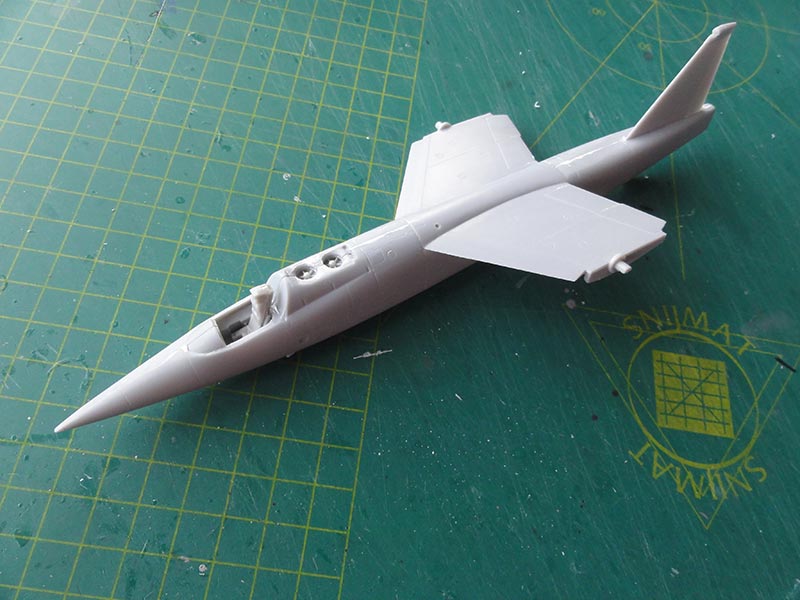
The paint work was to be done before adding all the smaller parts.
To get a good base paint coat, first airbrushed was a primer: base grey with Revell 75 "steingrau" aqua to check for any errors in filling. There are bright orange-red areas on the test X2, these were first airbrushed after some basic masking with Revell Aqua 330 bright red. Do not forget the areas on the nacelles.

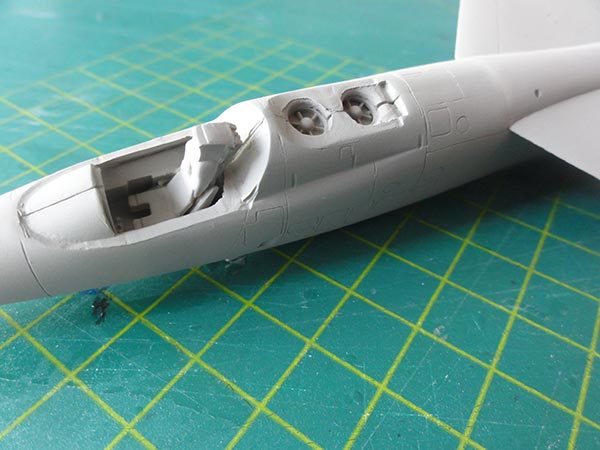
Next would be the model paint that is shown in the instructions as being aluminium. But photos show the VJ101 to be bare metal with some different metal panel hues. So ALCLAD II ALC-105 "high polished aluminium" metal paint would be airbrushed and that required a gloss black base coat, Revell gloss black 07 Aqua acrylic was thus airbrushed.
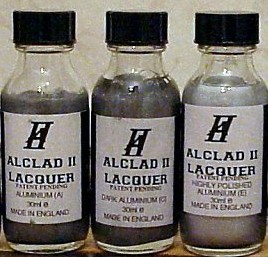
To get the different metal hues, I used my special trick: mask some panel first with masking tape. Than airbrush a first coat of ALCLAD. After a few passes, remove the tape with tweezers and apply a few more coats of ACLAD (but not too many). The masked panels will look slightly different. So no other metal colours are than needed and some polishing was now done with a cloth.

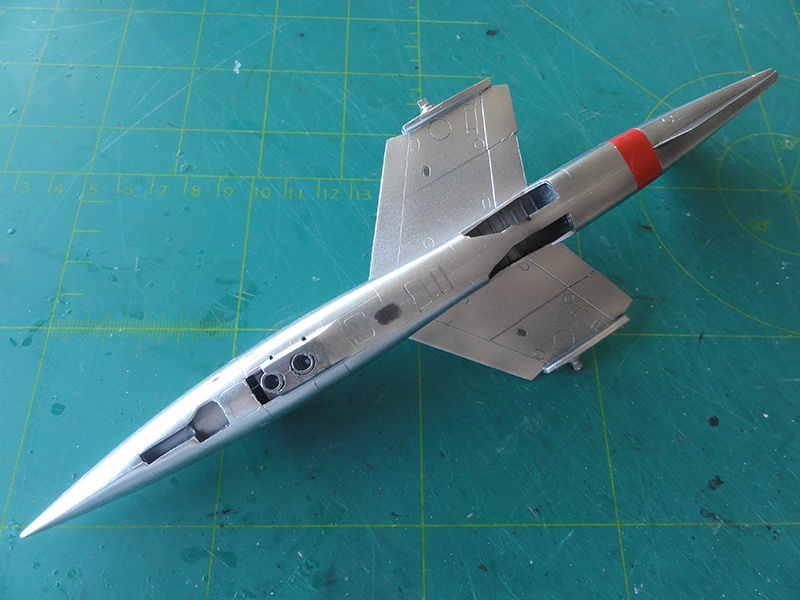
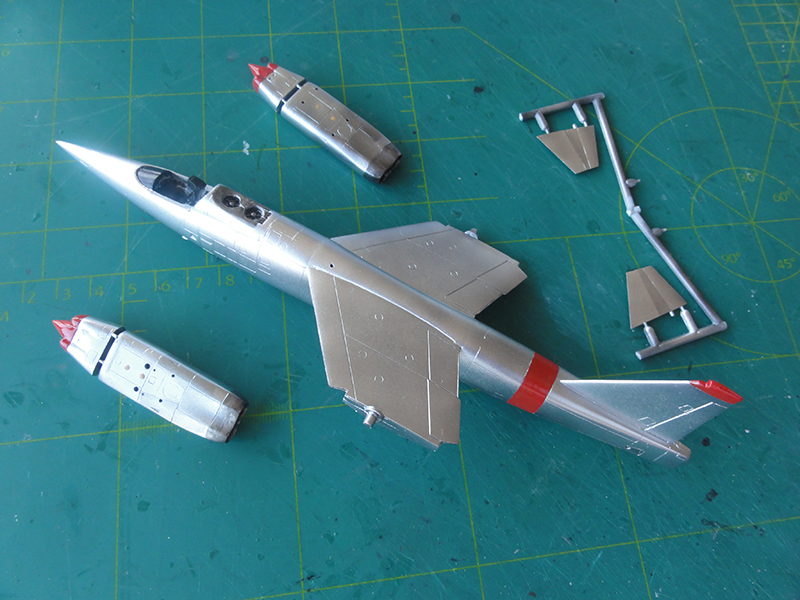
Some areas got a darker colour such as "bronze" at the ventral fin simply with a brush. The model now had the needed paint coats.
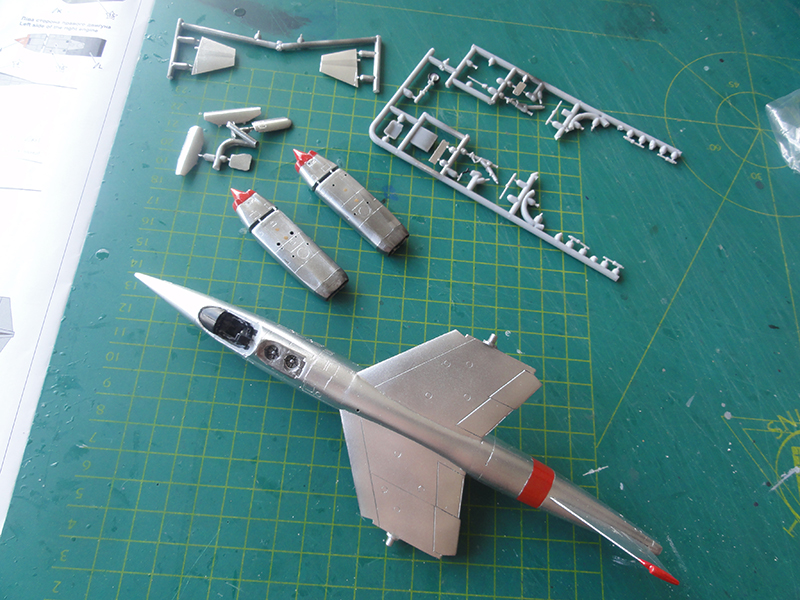
The few but excellent decals were set onto the model.
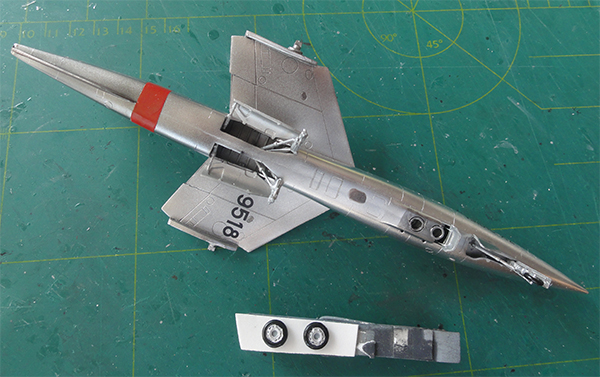
Next steps were done now. Fitting the undercarriage struts of STEP 16 was a bit puzzling for me. I removed a section of the strut and made sure it was all symmetrical.
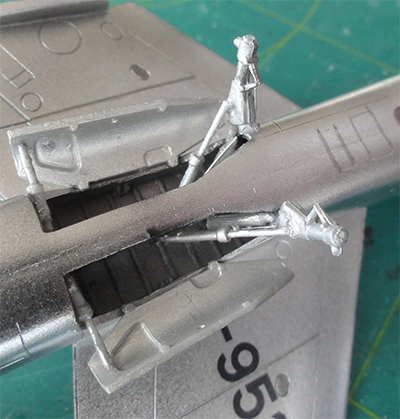
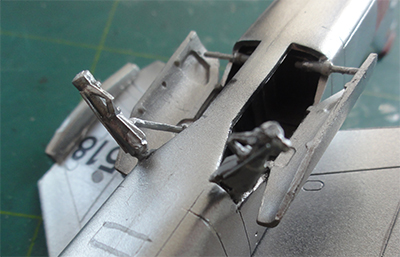
The nose door #E20 can also be set open. I shortened the nose wheel strut with 2 mm.
Fitting the tip nacelles on the wing tips is not shown in the instructions. But I needed to enlarge the pivot holes to fit them and set them at an angle.
The horizontal tailplanes were fitted at this stage.

The small cockpit was painted with black interior and the seat got the seat straps included in the etched metal fret provided. The canopy frames were painted aluminium and note that the anti-glare panel is provided as a decal.
There is a strange error in the instructions in STEP 19. The rear canopy when set open does NOT tilt upwards, but turns to the left (just as on a F-104 Starfighter). The windscreen needed a bit white glue to close the tiny gaps.

(NOTE: I later found that the seat has 2 firing handles on top; this I will correct on the model).
A few doors were set open, with small pushing rods from thin rod. The model was covered with a few coats of gloss varnish (airbrushing Johnson Future/Pledge Floor Care acrylic). Finally the pitot was replaced with a metal needle and that completed a nice special model in the collection.


EWR VJ101C-X2 during testing "in 1967"
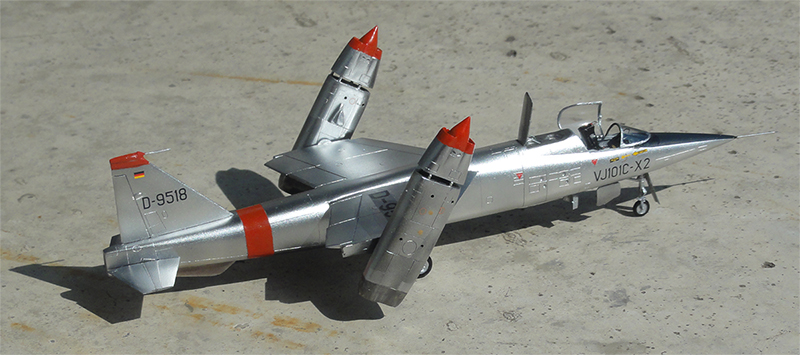
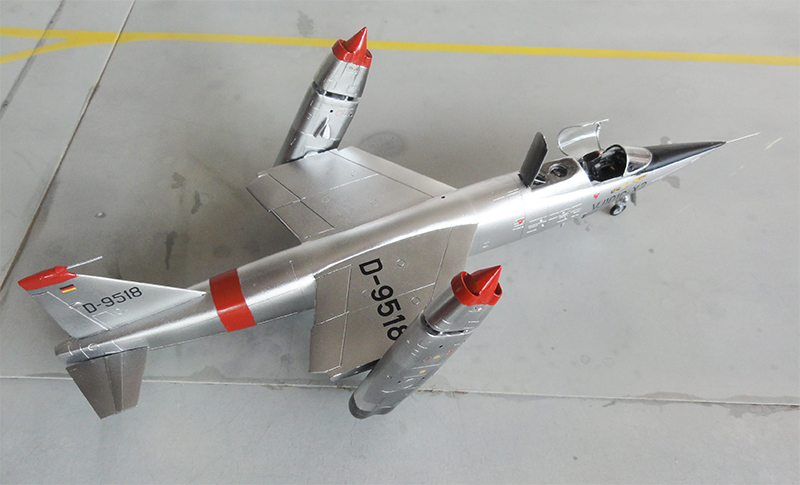

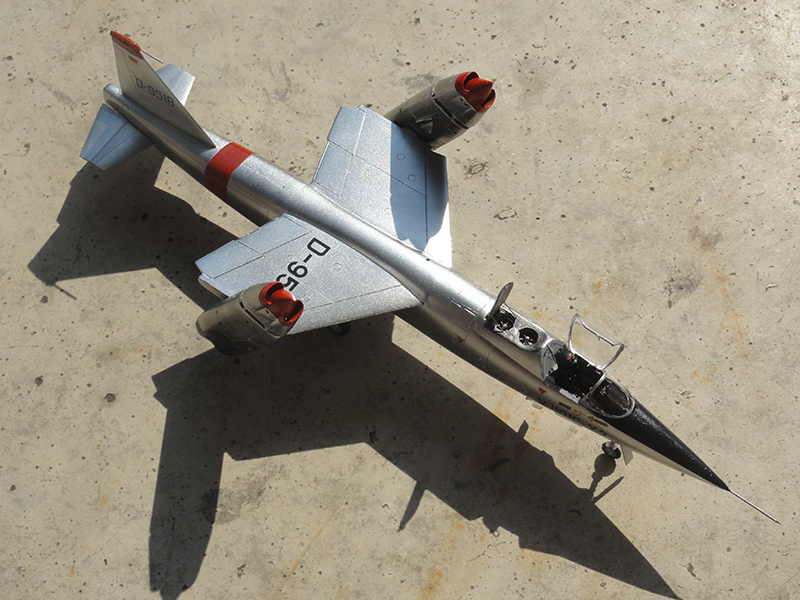
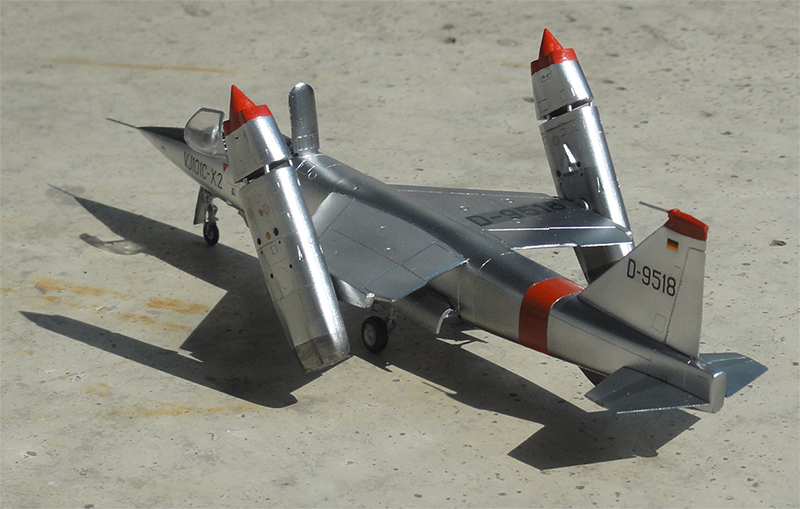
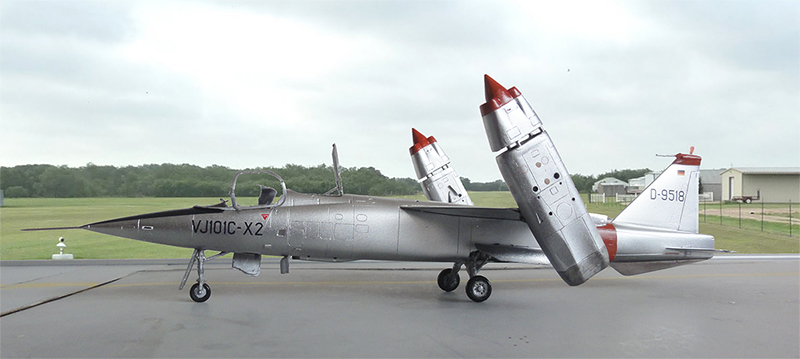
Back to 1/72 models .....
References:
- Air International, Volume 16, pages 178, 229
- Wings of Fame, Volume 5, pages 115-120.
- VTOL aircraft, Mike Rogers, Haynes Foulis publishing, 1989
Internet:
- IPMS.NL VJ-101 walk around (with photos of my modelling friend Bruno)
- WiKiPedia VJ-101
- Robert Mason VTOL info [PDF]

(c) Copyright Meindert "designer"/ All rights reserved. Your comments are welcomed by webmaster
Created this page June 28, 2019